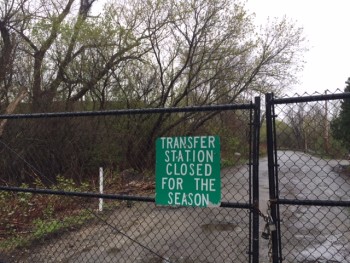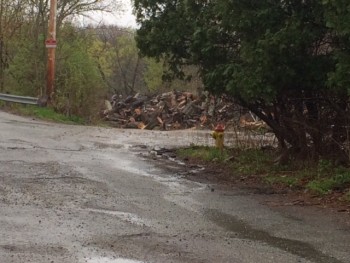Photo: An exterior elevator in Italy.
Two months ago, the Major Capital Projects Working Group revealed a long-term plan for a new Belmont Police Headquarters located adjacent to the Water Division facility at the end of Woodland Street. Best guess for its opening? Approximately 2026-ish.
But there’s a chance the working group could recommend bringing the proposed project before town residents for a funding vote in the next year or two.
What could fast forward the project is whether an emergency “fix” to the existing police station can include a temporary elevator fitted to the exterior of the building. That was the latest update provided by Working Group member Anne Marie Mahoney to the Belmont Board of Selectmen on Monday, Nov. 6 during a board’s review of the warrant articles before Monday’s Special Town Meeting.
“If that elevator can’t be added to the building, then it’s extremely likely in the Spring [the Working Group] will have another plan ready with a new funding source,” said Mahoney.
The Working Group is requesting from Town Meeting $383,000 be spent to create schematic plans for short-term repairs to the Police Station and the main building at the Department of Public Works, both which are in severe states of disrepair. The funds for the designs – which will outline the “emergency solutions” needed to “create … humane conditions for our employees,” according to Mahoney – will come from a portion of the insurance money the town received after an April 1999 fire destroyed the former Kendall School on Beech Street.
Once the designs are finalized, the Working Group will return to the annual Town Meeting in May seeking a bond authorization of between $4 million to $5 million to make the repairs at both buildings.
The big question mark on the future of a new headquarters is a proposed fill-in elevator. The police station doesn’t have a functioning lift in the two-story building which is in violation of the Americans with Disabilities Act (ADA). While the headquarters is allowed to operate under a grandfather clause, once “penny one” of the renovations is spent, the town is required to bring the building up to code.
Back in October, it was assumed a temporary elevator connected to the outside of the building would be sufficient. But since then, other experts are not so sure an elevator is “doable” at the site, said Mahoney.
If the elevator cannot be incorporated in the emergency repairs, Mahoney told the board the working group would develop a secondary plan that would call for the construct a new police headquarters “sooner than later.”
“If we can’t do the emergency repairs now, we have really no choice but to move quickly on a new building,” said Mahoney.
Mahoney said it would take less than a month for schematic designs to be completed by the first of the year, “so we’ll have six to seven months to figure it out” before Town Meeting.
Mahoney said it would be a challenge to develop a funding plan – past estimates pegged a new police station in the $20 million range – which will primarily be competing with a debt exclusion vote for a new/renovated Belmont High School which could reach $200 million.

